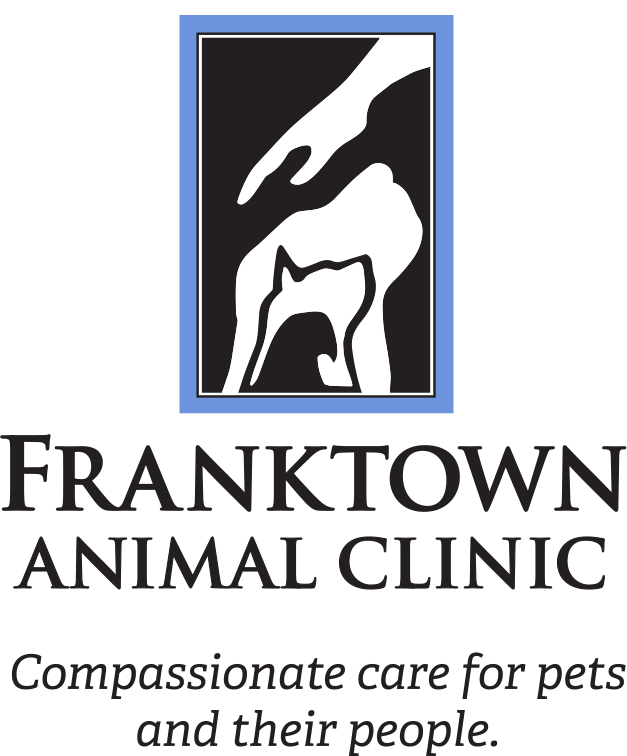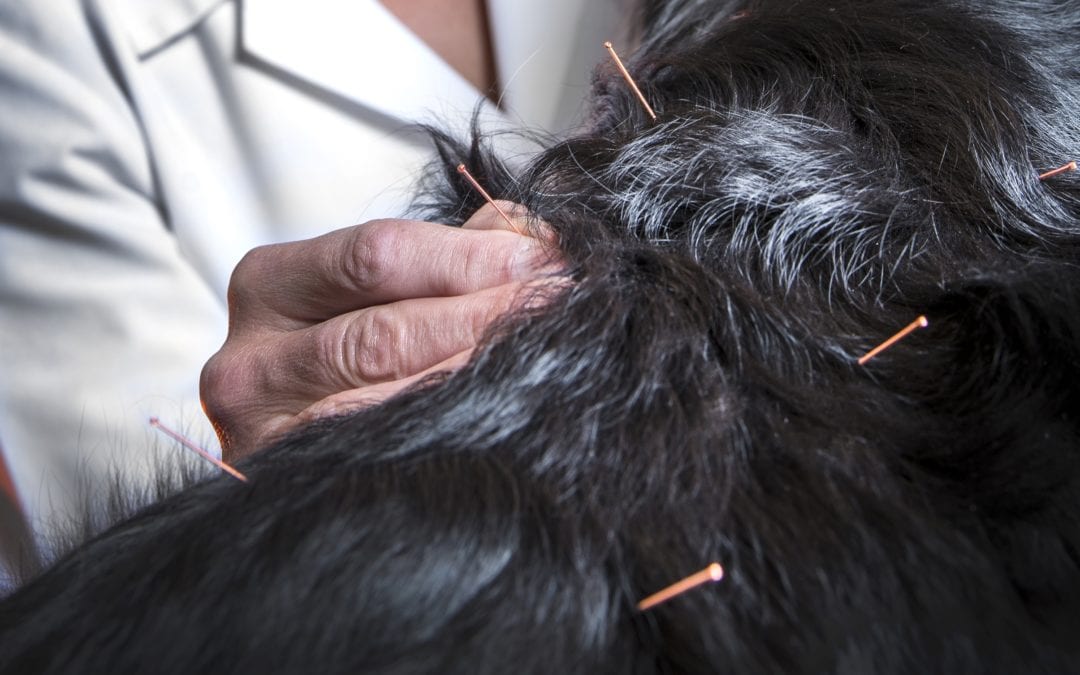By Dr. Jennifer Menning
Acupuncture has been available as a treatment modality for thousands of years. It is an adjunctive treatment that can be used for a variety of ailments, including arthritis, gastrointestinal upset, intervertebral disc disease, coughing, and even ocular problems, such as dry eye. The majority of our long-term acupuncture patients are older dogs with arthritis, muscle atrophy, and weakness in the hind end. Acupuncture is performed to stimulate the nervous system. It involves inserting needles into specific points around the body. These points are active areas in which nerves and blood vessels are plentiful. Inserting an acupuncture needle increases the body’s circulating endorphin levels, as well as dampens the pain signal on its way to the brain. It is important to note that in arthritic dogs, acupuncture does not “fix” the underlying problem, but rather allows the animal to be more mobile and comfortable.
So what does an acupuncture session look like? In the exam room, we will first perform a complete physical exam, followed by a myofascial palpation exam. This involves palpating the muscle and soft tissues for any “taut bands” or tight areas. For example, in a dog with a cranial cruciate ligament tear, we will often find tightness in the back and/or triceps muscles due to the dog unweighting its pelvic limb. It is important to look at the body as a whole, rather than only focusing on the problem area. Everything in the body is connected. We will then place our acupuncture needles in the appropriate points. These points change from session to session depending on where the animal is tight or painful.
When first beginning acupuncture on an animal, we perform once weekly sessions for the first month, and then it is performed as needed depending on how the animal is doing. Typically, we will acupuncture the animal once every 2 weeks, then once every 3 weeks, and so on. The effects of acupuncture are cumulative, so we usually see clinical improvement between the 2nd and 3rd sessions. Some animals may be sore for 24 hours after the first session. If an animal is not improving or is too wiggly for the acupuncture needles, we can consider therapeutic laser treatment. Many animals receive both acupuncture and laser treatments concurrently. We typically place 15-20 needles per session and leave them in for approximately 20 minutes. We have 13-mm needles for small dogs and cats, and longer 25-mm needles for larger dogs. To help keep the animal calm, we will offer them frozen baby food as a treat. Usually, the animal is very relaxed by the end of the session. Once finished, we will simply remove the needles and then the patient can go home.
To summarize, acupuncture is a very safe, easy, and scientifically proven treatment modality that helps with a variety of conditions. We most commonly perform acupuncture on older, arthritic dogs. Acupuncture works by stimulating the nervous system. For our clients looking for an additional treatment option, we would be happy to further discuss acupuncture.
Have questions?


